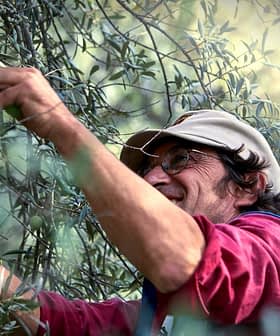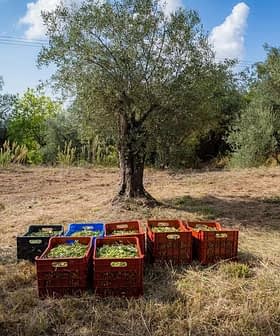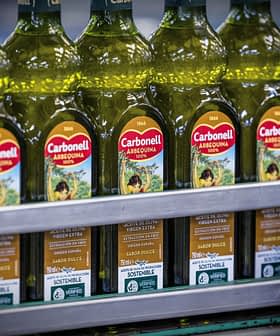Even During a Pandemic, Greenhouse Gas Emissions Soared to Record Highs in 2020
A report from the American Meteorological Society found that carbon dioxide concentrations were the highest they had been in at least 800,000 years.
In 2020, more than 100 tropical storms in both hemispheres were reported, compared with the average of 85 such storms between 1981 and 2010.
The same year saw Greenland lose 66 billion metric tons of ice, while glaciers around the globe lost mass for the 33rd consecutive year.
Achieving net-zero greenhouse gas emissions by 2050 and possibly even earlier is absolutely essential.
Also in 2020, total fire emissions in the western United States were three times higher than those registered from 2003 to 2010.
In many areas of the world, extreme weather events and droughts have devastated agriculture and negatively affected crop yields.
See Also:WildfiresAccording to the State of Climate in 2020 report published by the American Meteorological Society (AMS) last month, global emissions of greenhouse gases exceeded all previous records.
As modern technology has allowed scientists to examine ice cores and determine those gases’ concentration in the atmosphere through more than 800,000 years of natural history, AMS warned that those historical numbers do not compare with those recorded in 2020.
Last year, carbon dioxide concentrations in the atmosphere hit a record high of 412.5 parts per million, 2.5 parts per million more than recorded in 2019.
The scenario framed by the AMS report coincides with the findings in the latest United Nations Intergovernmental Panel on Climate Change (IPCC) report.
“Achieving net-zero greenhouse gas emissions by 2050 and possibly even earlier is absolutely essential,” Thomas Bernauer, an IPCC advisor and professor at the Institute of Science, Technology and Policy in Zurich, Switzerland, told Olive Oil Times. “The Paris Climate Agreement aims at this.”
“But even if this can be achieved, mainly by phasing out any use of fossil fuels over the next few decades, the climate will keep warming further over the next 50 to 100 years,” he added. “This means governments and the private sector around the world will have to invest very heavily in protecting against unavoidable climate change-related risks and hazards.”
“That is, climate change adaptation measures are required alongside mitigation measures for greenhouse gas reduction,” Bernauer continued. “There is a very close relationship between mitigation and adaptation.”
In the United States, European Union and China, governments and local authorities have launched programs to protect and rebuild infrastructure hit by wildfires and other extreme events.
New projects are being devised to improve agriculture’s resilience to the changing climate and to reduce emissions caused by farming. New funds to rebuild their activities and their operations are also distributed to farmers in the hit areas.
U.S President Joe Biden recently approved compensation for those affected by the California wildfires. Similar compensation is being provided to farmers in Spain and Italy, mostly funneled to the areas hit hardest by heatwaves and blazes.
Meanwhile, in India, farmers on the Raigad and Ratnagiri coasts received compensation for the cyclones that decimated the important cash crops of betel, coconut and mango in 2020.
See Also:Europe Introduces Plan to Cut Greenhouse Gas Emissions in Half by 2030However, experts warn that not all countries hit by the effects of climate change, which are being triggered by higher greenhouse gase concentrations in the atmosphere, can afford such policies.
“If we do not reduce emissions rapidly, the adaptation costs will grow enormously and will become unaffordable and technically unfeasible for many countries,” Bernauer said. “Climate change is likely to widen the gap between rich and poor countries.”
“Rich countries have more resources to be able to afford the large technological transition toward a low-emissions economy and to protect against climate change impacts,” he added. “The faster the rich countries act in reducing their emissions, the smaller will be the harm climate change creates for poor countries.”
In the next decades, climatologists and oceanographers expect sea levels to rise constantly and inundate densely populated and intensively farmed areas. Sea level rise is driven mostly by the melting of the polar ice caps and glaciers, and rising temperatures in the oceans, which leads to their expansion.
Oceans trap one-fourth of all the Earth’s carbon dioxide, but its continuing accumulation in the waters increases their acidity, with growing consequences for barrier reefs and marine life. As the waters warm up, scientists warn that their ability to trap carbon dioxide from the atmosphere diminishes.
“Ocean temperature is of absolute relevance to understanding global warming because oceans’ thermal capacity is much higher if compared to the atmosphere,” Gianmaria Sannino, a climatologist in charge of the European Climate Research Initiative’s Sea Level and Climate Change project, told Olive Oil Times.
“To warm up the oceans, much more energy is needed,” he added. “When we talk about adding 1 ºC to the ocean temperature, we’re talking about a quantity of energy we pushed into our oceans, which is comparable to five first-era atomic bombs exploding every second in the last 30 years.”
For this scenario to come to fruition, greenhouse gas emissions would need to continue to grow on a global scale.
However, the AMS warned that greenhouse gases emissions’ growth did not falter, even as much of the world came to a standstill during the Covid-19 pandemic and emissions from fossil fuels dropped by six or seven percent.
“This is a stark reminder that factors leading to a changing climate are determined by time horizons far longer than a single year and have an inertia that will take a significant effort over a much longer period to halt much less reverse,” the AMS researchers wrote.
“One event on its own is noteworthy, numerous events of a similar nature in one year are interesting, but many of these being record-breaking in the context of past observations is concerning,” they added. “The long-term, clear, consistent trends over the last 10, 50 or 150 years tracing the ongoing warming of our planet are striking.”
See Also:2020 Tied for Hottest Year on Record, Capping Off the World’s Warmest DecadeThe AMS scientists agreed with the IPCC’s latest report, which says taking quick and decisive action is critical to curtail the most extreme consequences of climate change.
While countries such as Poland have announced that it will close the coal-fueled Bełchatów power station – considered the most polluting plant of this kind on the planet – in 2020, China has recently confirmed that it intends to reach a net-zero regime within the next 40 years.
Credited with being responsible for at least 27 percent of current global emissions, Beijing has announced a new five-year effort to enhance the resilience of its marine ecological system creating new carbon sinks to capture and store greenhouse gas emissions.
In New Zealand, the government has set a carbon dioxide net-zero goal for 2050, but it is still unclear how it will tackle the methane emissions – a potent greenhouse gas – related to the extensive cattle operations.
According to the figures released by the Ministry of Environment, greenhouse gas emissions have been steadily rising in the last few years. An expert commission appointed by the government said that methane emissions could be cut by improving breeding and farm practices and reducing herds numbers.
Not all countries and regions, though, are investing in new agricultural methods capable of adapting to climate change and reducing the sector’s environmental impact, scientists warn.
“Governments and consumers in rich countries are pushing farmers toward more sustainable forms of production,” Bernauer said. “At the same time, farmers are facing growing climate change risks, such as droughts, extreme weather events, fires and pests.”
“In the countries that can financially afford this, governments will have to provide more support to farmers affected by climate change impacts,” he added. “However, in turn, farmers will have to agree to more environmentally sustainable forms of production. For example, reducing pesticide and fertilizer use, and giving up intensive forms of animal farming.”
However, Bernauer emphasized that new and yet-to-be-discovered agricultural technologies will play a critical role in mitigating the impacts of climate change on the sector.
“I strongly believe that technological innovation will be very helpful,” he said. “Examples in the farming sector include highly water-efficient forms of irrigation and breeding of more drought-resistant plant species.”
“But I also believe we need to push ahead with technologies for carbon removal from the atmosphere,” Bernauer concluded. “That is, technology is crucial for mitigating climate change and adapting successfully to climatic changes we are unable to prevent.”








